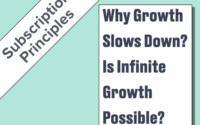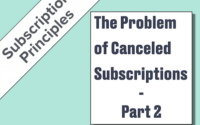Do’s and Don’ts of Subscription: Allowing Subscription Cancelation – 4/5
09/09/2024
Definition and context
There are two ways to terminate a subscription:
- Explicit termination: the customer informs the merchant of his desire to cease the provision of the service. It’s a customer initiated cancelation.
- De facto termination: the merchant, not being paid, ceases the provision of the service. It’s a merchant initiated cancelation.
Regulators’ preference 👮
They require that:
- The customer can cancel the subscription as easily as he was able to subscribe,
- The cancelation process must be easily accessible and visible. It must be documented in the FAQs and in the communications.
- Cancelation must be possible from an online customer account and on any platforms that can be used (mobile, tablet, desktop computer)
- Do not prevent the customers from canceling by complicating the process or distracting them
- Do not use Dark Patterns.
👍 The Do’s 👍
- In all email communications, include a link to the customer account where to cancel.
- Have a “Cancel the subscription” link on the home page and in the FAQs. Include a process to request a pro rated refund.
- Make cancelation possible in two clicks: from the home page, customers click to cancel, then click to confirm. The clicks to reach the account and identify themselves are not counted.
- Send an email, after cancelation, to confirm the termination of the subscription. And continue to provide the service for the remaining time already paid.
- Make a win-back offer once customers have successfully canceled.
👎 The Don’ts 👎
- Don’t require installing an application, calling a call center, and even less with a paid phone number to cancel the subscription.
- Don’t slow down the cancelation process by multiplying the number of steps, nor ask for reasons for the canceling, nor confuse the customer by using cumbersome terms. For example: “Do you want to cancel your subscription? Answer A: “Continue”, Answer B: “Cancel”
- Don’t make a commercial offer before cancelation.



